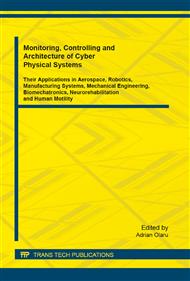[1]
D. Hietel, K. Steiner, J. Struckmeier, A Finite – Volume Particle Method for Compressible Flows, Mathematical Models Methods Applied Sciences 10(9), 2000, pp.1363-1382.
DOI: 10.1142/s0218202500000604
Google Scholar
[2]
R. Keck, The Finite Volume Particle Method: A meshless Projection Method for Incompressible Flow, Ph.D. Thesis, University of Kaiserslautern, (2002).
Google Scholar
[3]
D. Teleaga, Numerical Studies of a Finite-Volume Particle Method for Conservation Laws, Master Thesis, University of Kaiserslautern, (2000).
Google Scholar
[4]
D. Teleaga, A Finite-Volume Particle Method for Conservation Laws, Ph.D. Thesis, University of Hamburg, (2005).
Google Scholar
[5]
D. Teleaga, J. Struckmeier, A finite-volume particle method for conservation laws on moving domains, International Journal for Numerical Methods in Fluids 58, 2008, p.945–967.
DOI: 10.1002/fld.1778
Google Scholar
[6]
S. Li and W.K. Liu, Meshfree Particle Methods, Berlin, Springer Verlag, (2007).
Google Scholar
[7]
L.C. Berselli, T. Iliescu and W.J. Layton, Mathematics of Large Eddy Simulation of Turbulent Flow, Berlin, Springer Verlag, (2006).
Google Scholar
[8]
A.J. Chorin, A numerical method for solving incompressible viscous flow problems, Journal of Computational Physics 2, 1967, pp.12-26.
DOI: 10.1016/0021-9991(67)90037-x
Google Scholar
[9]
D.J. Muñoz, V. Springel, R. Marcus, M. Vogelsberger and L. Hernquist, Multi-dimensional, compressible viscous flow on a moving Voronoi mesh, Monthly Notices of the Royal Astronomical Society 428, 2013, pp.254-279.
DOI: 10.1093/mnras/sts015
Google Scholar
[10]
Árpád Veress, Incompressible Flow Solver by Means of Pseudo-Compressibility Method, Hungarian Electronic Journal of Sciences, 2003, 11 p.
Google Scholar
[11]
C.J. Roy, C.C. Nelson, T.M. Smith and C.C. Ober, Verification of Euler/Navier-Stokes codes using the method of manufactured solutions, International Journal Numerical Methods in Fluids 44, 2004, pp.599-620.
DOI: 10.1002/fld.660
Google Scholar
[12]
R.M. Nestor, N.J. Quinlan, Application of the meshless finite volume particle method to flow-induced motion of a rigid body, Computers & Fluids, (2013).
DOI: 10.1016/j.compfluid.2013.10.004
Google Scholar


